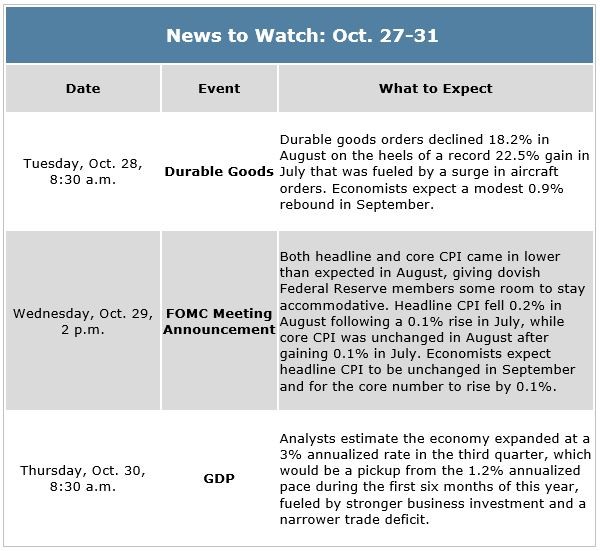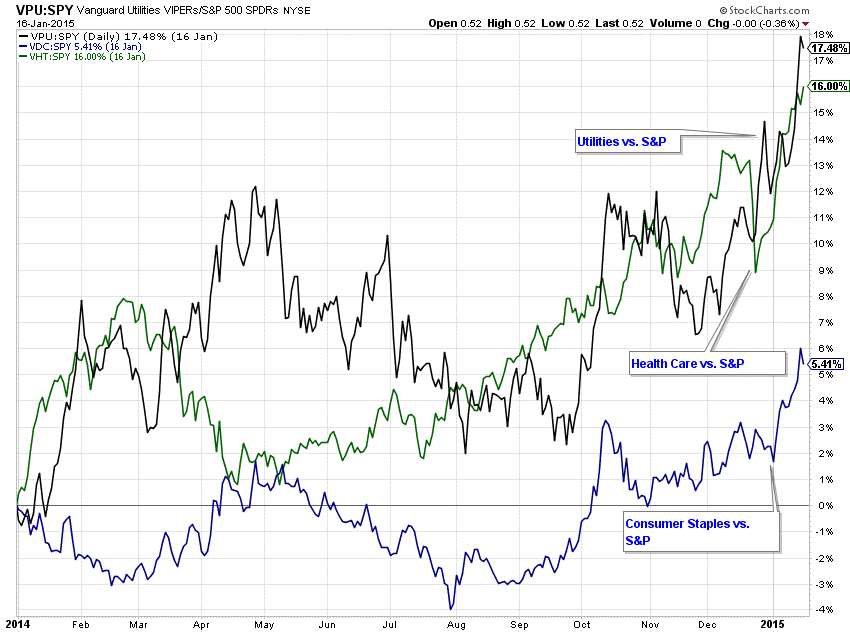This Defensive Sector May Be Your Best Bet Until The Market Picks A Side
Post on: 5 Август, 2015 No Comment

Share | Subscribe
All major U.S. stock indices finished in positive territory last week, for the first time since Aug. 29, led by the tech-heavy Nasdaq 100, which gained 5.9%.
At face value, the outperformance by market-leading technology issues is a positive sign for the fourth quarter. But my proprietary metric shows that the biggest outflow of sector-related assets over the past one-week and one-month periods actually came from tech. Unless these outflows stop, the sustainability of last week’s strength in technology is suspect.
Overall, last week’s market activity was encouraging as, in addition to the outperformance by technology, European stocks rebounded nicely as market volatility declined here in the United States. However, a little more upside follow through on last week’s U.S. market rebound is necessary before I am convinced that the September correction is over and the larger 2014 advance has resumed.
Europe Still Key to the U.S. Market
In last week’s Market Outlook . I discussed the bearish head-and-shoulders pattern in Germany’s DAX index, which has been positively correlated to the S&P 500 over the past 20 years. I said it targeted a decline to 7,800 as long as it remained below the March 14 and Aug. 8 lows near 8,913.
After bouncing off of underlying support at 8,558 in mid-October, the index managed to climb back above 8,913 by the end of last week, closing at 8,988 on Friday.
Although the DAX will have to get back above its 200-day moving average at 9,517 to negate the bearish pattern, as long as the index remains above 8,913, I will view it as being indirectly positive for the U.S. market.
Investors Becoming Less Fearful
The CBOE Volatility Index ( VIX) spiked above 30 on Oct. 15, and last week, I pointed out that four of the past five times this occurred coincided with or led significant bottoms in the S&P 500. What I wasn’t sure about at the time was whether this latest instance would become a gradual bottom that takes weeks to evolve or a more immediate one. The next chart suggests the latter.
The VIX finished last week at 16.11, just above its 50-day moving average at 15.12. The chart shows that the past two times that the VIX made a sustained move above its 50-day moving average, indicating an increase in investor fear, coincided with declines in the S&P 500.
If the VIX continues to decline this week and moves back below 15.12, I will view this as more indirect evidence that the larger 2014 broad market advance has resumed. Above 15.12, however, the market is vulnerable to more near-term weakness.
Utilities Showing Upside Potential
While we are waiting for the German DAX and VIX to make things a bit clearer, a more conservative way to participate in the market may be emerging in the defensive Utilities Select Sector SPDR ETF (NYSE: XLU ) .
The next chart shows XLU resumed its 2014 advance on Oct. 20, by rising out of four months of sideways action that indicated investor indecision.
This area of indecision, which took the form of a triangle pattern, targets a move to $47, 5.6% above Friday’s close, which will remain valid as long as the upper boundary of the pattern at $43.12 loosely contains the ETF on the downside as underlying support.
Last week’s strength in XLU corroborates my own metric that indicates the utilities sector now comprises 8% of all ETF-related sector bets, up from 6.1% as recently as Sept. 18. This means that new investor dollars are moving into this sector.

More Evidence Long-Term Rates May be Bottoming
In last week’s Market Outlook . I said, My work now suggests the decline in long-term U.S. interest rates is near completion. Therefore, downside risk now outweighs upside potential in U.S. Treasury prices.
The next chart, which plots the 2-year/10-year yield curve since 2012, is another reason to believe that is the case. It highlights the recent test of, and last week’s steepening from, the 180 basis-point (bps) May 2013 wide extreme that I first identified as being important in the Aug. 25 Market Outlook .
The 2s/ 10s curve and the yield of the 10-year Treasury note have had a close positive correlation over the past two years, as the yield of the 2-year has been locked down near zero due to quantitative easing. I view the recent steepening from 180 bps as an indirect indication of an emerging rise in long-term interest rates. This is especially true considering that quantitative easing is scheduled to end this month.
Putting It All Together
Last week’s positive close in the major U.S. stock indices amid declining volatility, as well as the rebound in European stocks, is a preliminary indication that the September correction is over and the larger 2014 advance is resuming.
Intermediate- to long-term investors may want to consider putting some money to work at or near the 200-day moving averages in the major U.S. indices, all of which have been tested and held over the past two weeks. If the market is indeed resuming its larger bullish trend, this is a likely place for it to begin.
However, I am still waiting for a sustained rise above 8,913 in the DAX and a sustained decline below 15 in the VIX to help confirm that this is indeed the case. In the meantime, the typically defensive utilities sector may be a more conservative alternative as we wait for the landscape to become a bit clearer.
Editor’s note: If you want help spotting 2015’s biggest winners, a little-known indicator may be your ticket. It found four of this year’s best stocks and delivered gains as high as 266%. Now it just found 10 more stocks flashing the same buy signal as last year’s best picks. Learn more about this indicator and get the name of one of its top picks in this free research report .














